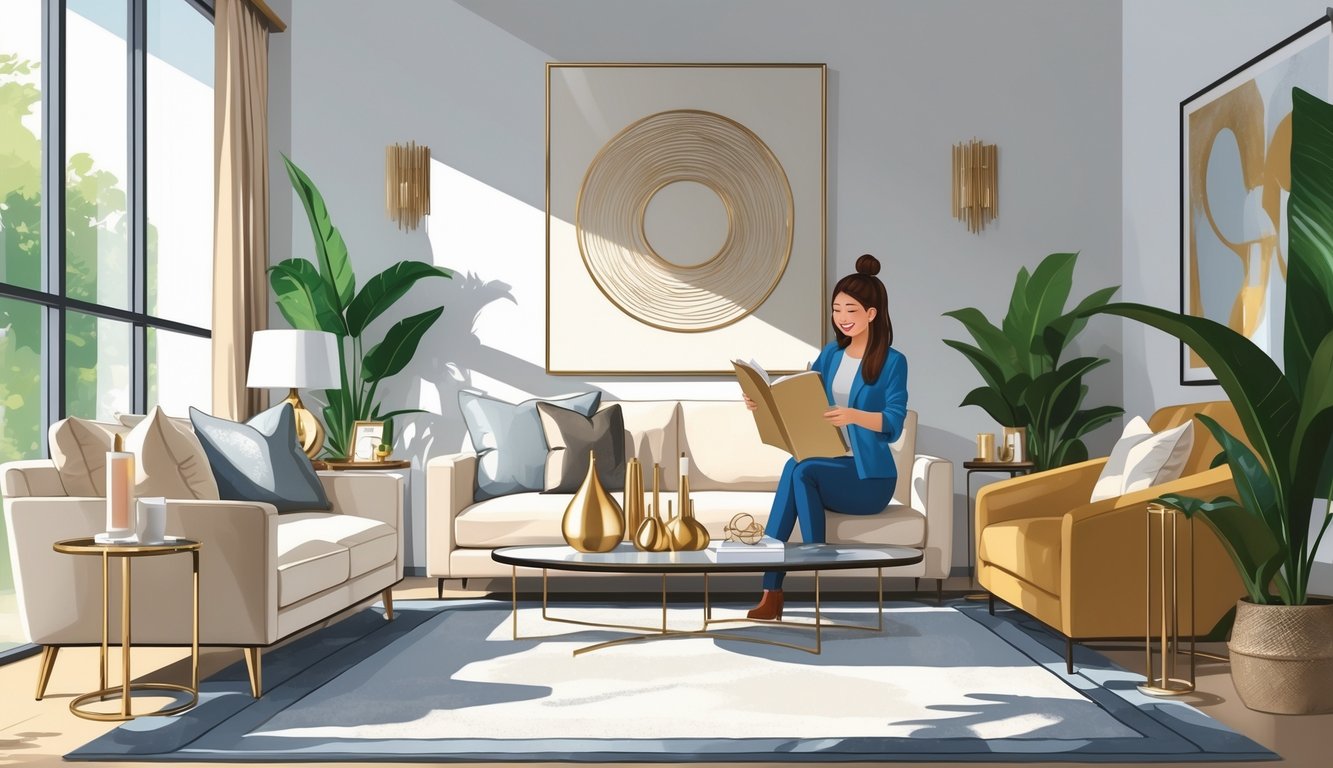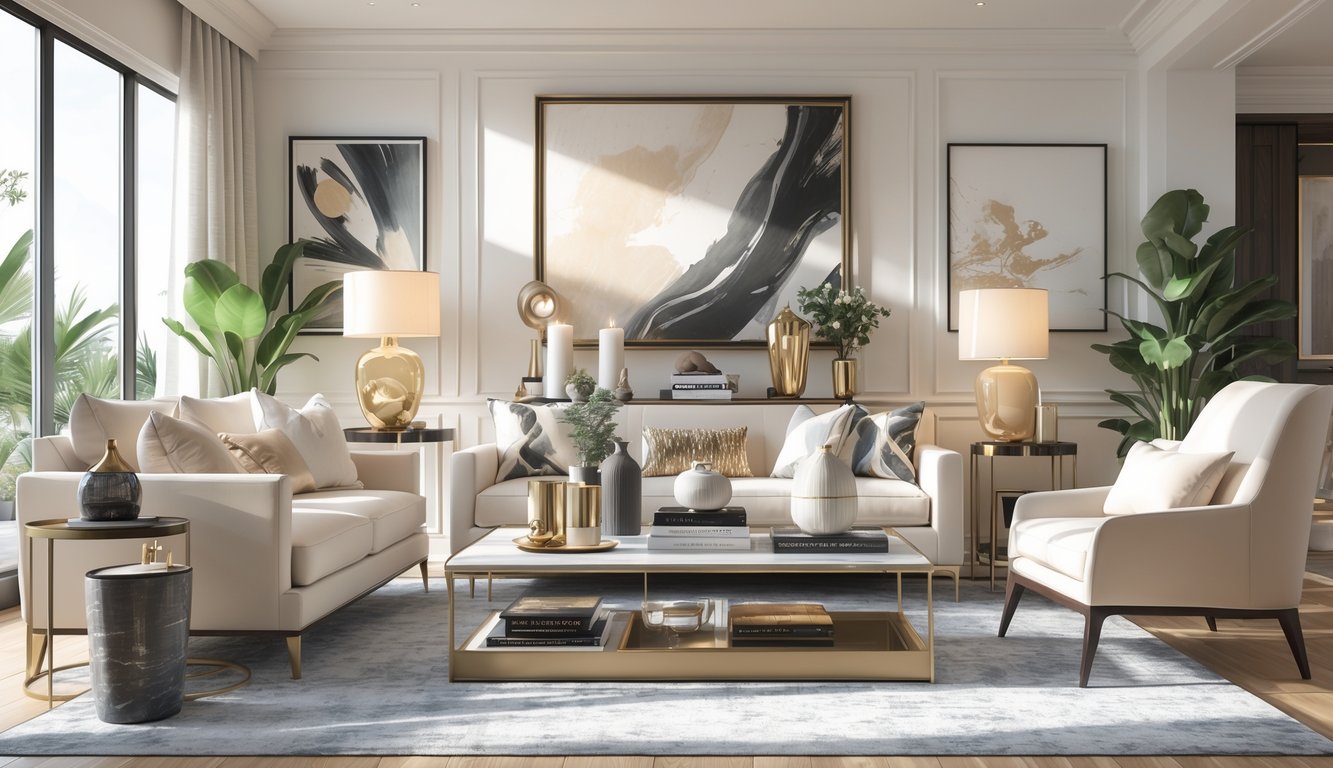
Okay, so apparently everyone and their neighbor is obsessed with these Restoration Hardware dupes on TikTok—except my mom, who thinks “dupe” is just a typo for “duped.” I mean, open Pinterest for two seconds and you’ll trip over a $100 “marble” table that’s, what, 98% identical to the $3000 one? Maybe if you squint, you’ll spot the resin. Or maybe you won’t. Honestly, I can’t tell half the time. People are buying up these luxury decor dupes like they’re concert tickets, and I get it—who wants to drop thousands for something that looks (and sometimes feels) the same as the knockoff?
It’s always someone on Instagram flexing her “affordable” alabaster lamp, or a reviewer rattling off stats (“40% of my recs are dupes now!”) while interior designers low-key admit they swap in budget finds when the real thing’s backordered. Gen Z? Apparently, they spend more on these lookalikes than millennials ever did—at least according to some analytics firm I can’t remember. And 70% of them would rather brag about a dupe than the original (it’s in this industry report on luxury dupes). My neighbor? Lost his mind over a boucle chair knockoff that, for once, didn’t squeak like a haunted swing set.
Does it matter if I can’t tell the $800 light from the $60 one after 7pm? My dog doesn’t care; she naps under both. But here’s the part that makes me nuts—everyone swears their dupe is “just as good” until it falls apart in a week. Still, people will fight through TikTok’s weird checkout just to get a piece that looks expensive and still lets them order pizza.
What Are Luxury Decor Dupes?
Suddenly my feed is full of people trading links for $30 sconces “inspired by” $800 RH ones, and I can’t even check out without another velvet pillow dupe shoving itself into my cart. Wild to me how fast this dupe thing jumped from makeup into home decor—like, I blinked and now everybody’s house smells like vanilla, but not teakwood. Is that an upgrade? Not sure.
Defining Dupes in the Luxury Space
Nobody warned me that “dupe” would become a flex, but now it’s like a badge. “Check out my Gubi lamp dupe!” is a whole genre of TikTok. Technically, a dupe just copies the look or vibe of a luxury item, but doesn’t pretend to be the brand. Not original, but not really a fake either. Kind of a gray area, and honestly, it’s a goldmine for anyone who doesn’t care about labels.
Coffee tables, mid-century chairs, mirrors—these things all get the dupe treatment. They borrow the shapes, the colors, whatever, but swap in cheaper materials or tweak a detail so they don’t get sued. Yonder Consulting claims the dupe market is blowing up and messing with luxury brands, which is hilarious when you remember people used to whisper about knockoffs like they were buying black market organs.
I mean, my friend (the one who thinks she’s an expert) couldn’t even spot the difference between a $40 vase and a $1,200 one. She literally hesitated, and she’s supposed to know this stuff. Honestly, most of us just want the look without the price tag.
How Decor Dupes Differ From Counterfeits
Here’s where my lawyer friend would start yelling about trademarks, but I’ll try to keep it simple: a dupe is “inspired by,” never slaps on the real logo, and mostly stays out of legal trouble. Counterfeits? They just copy the brand name, pretend they’re the real thing, and that’s how you get sued.
If you’re scrolling and see “genuine LV” on a tray, that’s counterfeit. “Gold tray in the style of Ralph Lauren Home”? Dupe. Nobody’s calling the cops. Luxury brands pick their battles—if it’s too close, they’ll sue, but most dupes just skate by.
The weirdest part? Sometimes the dupe is so good nobody even cares it’s not real. My friend bought a “Cloud Couch dupe,” her dog destroyed it in a week, and she still brags about her “look for less.” Durability, ethics, whatever—nobody agrees. Cheap wins, at least for now.
Popular Categories of Luxury Decor Dupes
It’s not just Etsy candles and fake marble trays. Lighting’s everywhere—those “Anthro mirror” dupes? Target, Amazon, whatever. Same big, shiny look, just a different price tag. Sofas, armchairs—especially those modular “Cloud Couch” or “Wassily chair” knockoffs—pop up at every big-box store.
Wall art is hilarious. “Inspired by Rothko” prints for $10? Nobody’s fooled, but nobody cares. Tabletop stuff—brass bowls, vases, lamps, bookends—nothing’s safe. If it can be copied, someone’s already selling it.
Last year’s big hits? Bouclé ottomans, “Travertine” tables, scalloped mirrors, those weird pillar candles that look like ice cream. I’ve lost count of how many times I’ve been tricked by a listing hiding “dupe” in the fine print. Shoppers keep going, and so do the brands. There’s even a chart floating around comparing $25 vases to actual luxury ones. It never ends.
The Rise of Dupe Culture in Home Decor

Everywhere I look—group chats, random reels—people are obsessed with finding home decor dupes, even when last year nobody cared about a boucle ottoman. It’s all about speed. Trends jump from niche to mainstream in a week. I’ll forget the name of the original, but suddenly I’m convinced I need the dupe.
Why Aspirational Shoppers Love Dupes
Take that West Elm lamp that blew up on TikTok, or the cloud couch dupe everyone claims is under $500. Is it just me, or does anyone actually remember how much the original costs? My friends track luxury furniture launches, not to buy them, just to wait for someone to post the Target dupe.
It’s not just about saving money. It’s like, “Look how clever I am—I got the Restoration Hardware look for a third of the price.” Consultasg.com says dupe culture is more about hacking trends than pinching pennies. People love showing off what they didn’t spend.
One minute I’m window shopping at CB2, next thing I know my feed is all “get the look for less” hacks. Sometimes I wonder if the dupe is better because I don’t have to worry about ruining it. Maybe that’s just me being lazy.
Influencers and Social Media’s Role
There’s always an influencer pointing at her $40 bookcase like it’s a secret, but I already saw three others do the same thing today. Influencers are basically hype machines for dupes, but what really gets me is how hard TikTok and Instagram push this stuff.
Accounts like @thebudgethome or @dupehunter run “dupe or designer?” games, and suddenly everyone’s hunting down product codes before the video ends. It’s fun, I guess, but also kind of exhausting.
Algorithms? Those are wild. TikTok’s “For You” page or Instagram’s Explore will make a random Amazon tray sell out by dinner. Business of Fashion says these micro-trends are dragging everyone—middle class, not just broke college kids—into the hunt. I still can’t figure out how it happens so fast.
How Millennials and Gen Z Are Shaping Trends
Gen Z? They swap out decor like phone cases. Neon sconces one week, arch mirrors the next, then wavy candles—no warning. Millennials pretend to love vintage but secretly want the viral dupe. My cousin redid her apartment: “All Pinterest, all Target, zero regrets.” Her words.
Money’s tight. People talk about “dupe hauls” the way they used to talk about luxury unboxings. Reports say everyone wants new stuff but hates waste, so cheap alternatives are irresistible. Some TikTok-ers get all philosophical about it—“inspired by, not stolen”—but honestly, if you squint, it’s all the same.
Funniest thing? I heard a couple in Target debating if their friends would notice their lamp was a dupe. Spoiler: they didn’t care. They bought it anyway. So, yeah, maybe the only rule left is “find the dupe first.”